Hannah.Taylor
EF4
More and more I see so many chasers and even some meteorologists upset with the NWS assigned ratings to various tornadoes of significance.
Back in May, a home in Marion, IL was completely swept of its foundation. The tornado received an assigned rating of EF-4.
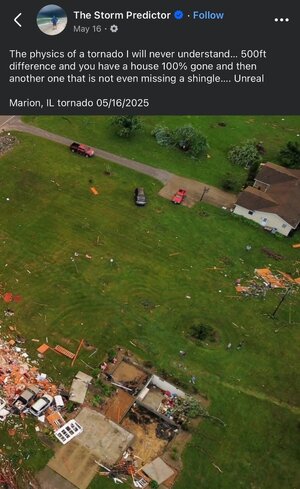
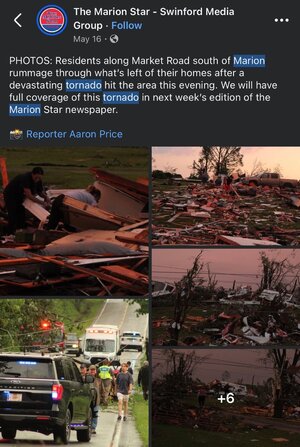
Of the most controversial tornadoes was the May 2013 El Reno, OK, which was assigned an EF-3 rating despite numerous readings of well over 200 mph but due to its path very limited damage to property and structures. I've actually heard people get angry over the rating of this tornado. Impassioned anger.
Tornado Tour Guide and Chaser Erik Burns posed a fantastic question last month.
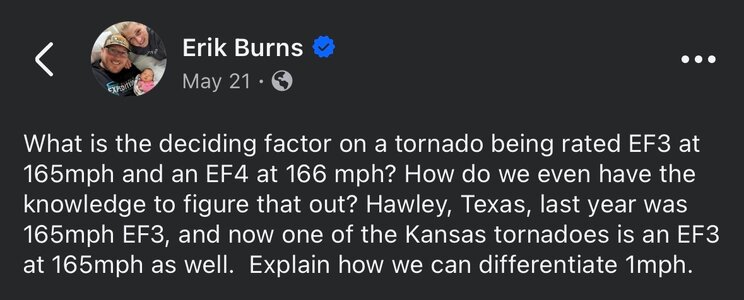
Ironically, there hasn't been a single tornado rated as an EF-5 since El Reno in 2013.
Tuscaloosa 2011 and El Reno 2013 definitely should have been EF-5's.
A commenter on Erik Burns post brought up a great example. How is a hurricane a CAT5 over the ocean when it's not even doing any damage on land but a tornado requires everyone to come measure?
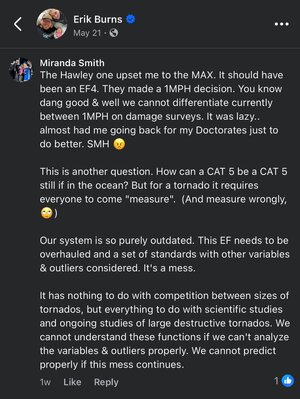
WIBW's Chief Meteorologist Jeremy Goodwin posted this a few days ago.
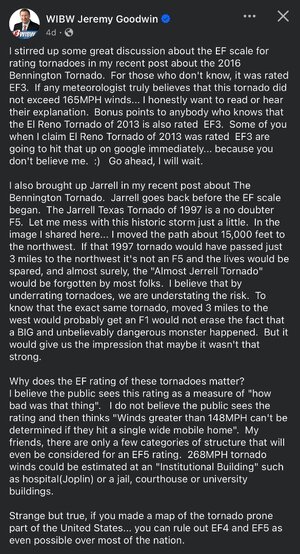
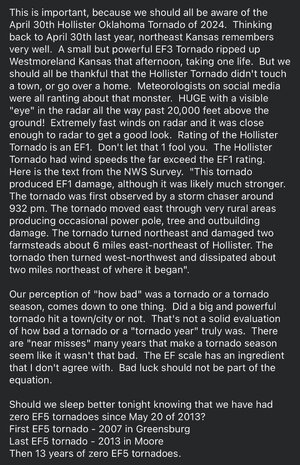
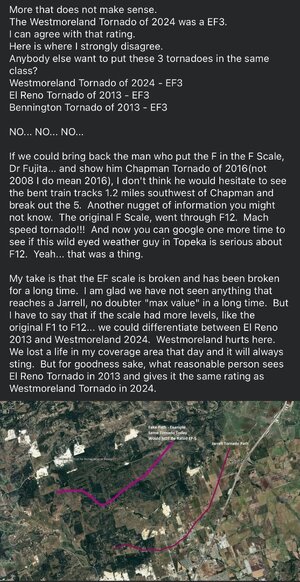
Is the NWS just reluctant to assign EF-5 ratings now? Is it because of insurance purposes? Is it a government mandate to avoid certain FEMA funding activations?
Whatever the reasons, I personally think they need two scales (or just do away with the Enhanced Scale and return to the original Fujita scale).
Tornado Intensity Rating (TIR)
One for actual measured wind speeds at any point during its tenure between touchdown to lifting. I believe the original Fujita Scale ratings would be acceptable here.
Tornado Damage Rating (TDR)
Ratings here would be based on the damage done. Do away with the Enhanced Fujita nonsense. Call it the TDR Scale. Levels 1-5.
Thoughts?
Back in May, a home in Marion, IL was completely swept of its foundation. The tornado received an assigned rating of EF-4.


Of the most controversial tornadoes was the May 2013 El Reno, OK, which was assigned an EF-3 rating despite numerous readings of well over 200 mph but due to its path very limited damage to property and structures. I've actually heard people get angry over the rating of this tornado. Impassioned anger.
Tornado Tour Guide and Chaser Erik Burns posed a fantastic question last month.

Ironically, there hasn't been a single tornado rated as an EF-5 since El Reno in 2013.
Tuscaloosa 2011 and El Reno 2013 definitely should have been EF-5's.
A commenter on Erik Burns post brought up a great example. How is a hurricane a CAT5 over the ocean when it's not even doing any damage on land but a tornado requires everyone to come measure?

WIBW's Chief Meteorologist Jeremy Goodwin posted this a few days ago.



Is the NWS just reluctant to assign EF-5 ratings now? Is it because of insurance purposes? Is it a government mandate to avoid certain FEMA funding activations?
Whatever the reasons, I personally think they need two scales (or just do away with the Enhanced Scale and return to the original Fujita scale).
Tornado Intensity Rating (TIR)
One for actual measured wind speeds at any point during its tenure between touchdown to lifting. I believe the original Fujita Scale ratings would be acceptable here.
Tornado Damage Rating (TDR)
Ratings here would be based on the damage done. Do away with the Enhanced Fujita nonsense. Call it the TDR Scale. Levels 1-5.
Thoughts?
Last edited:

